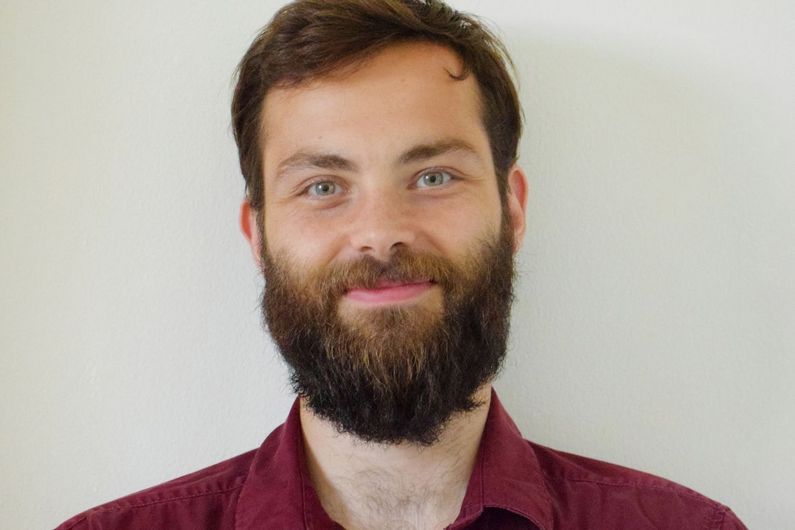Malik Chaker-Margot: A structural biologist takes on the molecule
- UdeMNouvelles
09/07/2022
- Mylène Tremblay
Malik Chaker-Margot, a scientist with a knack for explaining complex concepts in lay terms, returns to his alma mater to teach in the Department of Biochemistry and Molecular Medicine.
One of the first things one notices when perusing Chaker-Margot’s bio is the number of languages he speaks. In addition to French and English, this polyglot knows Spanish, Italian and German, and he’s learning Japanese.
However, the language our new assistant professor knows best is the idiom of structural biology, with its abstruse vocabulary: electron cryomicroscopy, crystallography, cell signalling, nucleic acids, RNP structure, small GTPase.
But his explanations make it all perfectly clear.
“In structural biology, you can see molecular interactions on a very small scale using a physical technique such as electron microscopy or crystallography. Since I’m visual—I need to see to understand—I was drawn to this approach.” - Malik Chaker-Margot
Chaker-Margot discovered the world of structural biology in 2012 in an internship under the supervision of Professor James G. Omichinski, while working on his undergraduate degree in biochemistry and molecular medicine at UdeM’s Faculty of Medicine.
A passion was born.
Electron microscopy and cell signalling
With his undergraduate honours degree in hand, Chaker-Margot headed to New York City to study at Rockefeller University, which has a highly regarded PhD program in biochemistry. “I arrived at a watershed moment in the history of structural biology,” he recalled. “Electron microscopy was in the midst of a resolution revolution.” It was becoming possible to see the molecules of living organisms with extreme precision. Chaker-Margot decided to specialize in electron microscopy and work on ribosome assembly.
He subsequently continued his research at the Biozentrum at the University of Basel in Switzerland, where he worked on cell signalling. “Cells perceive their environment—the quantity of nutrients available, the amount of oxygen, growth factors—and communicate this information to each other,” he explained. “Cell signalling makes it possible to process this information in order to change the cell’s behaviour and control cell division.”
What does he find so fascinating about this aspect of basic research? The possibilities it opens up for new therapies.
“Some of the proteins involved in signalling are overexpressed or mutated in cancers. If we understand how the proteins work, we can manipulate them and develop new treatments.” - Malik Chaker-Margot
From the lab to the classroom
Chaker-Margot is teaching his first course this fall. Between teaching, research, supervising internships, applying for funding and recruiting students for his lab, he has his hands full.
“Teaching requires a tremendous amount of preparation. To transmit your knowledge to others, you have to master the material even more thoroughly. It’s very rewarding and gratifying.” - Malik Chaker-Margot
In addition to his mentors James G. Omichinski at UdeM, Sebastian Klinge at Rockefeller University and Timm Maier of the University of Basel, Chaker-Margot will look for inspiration to Normand Brisson, the retired professor in the Department of Biochemistry and Molecular Medicine whose former office he now occupies. “He was an absolutely incredible teacher who spent a great deal of time discussing and asking questions in class,” he said. “To do that, you really need to have a deep command of the subject and a feel for conveying it.” That is another dialect this polyglot plans to add to his repertory!













